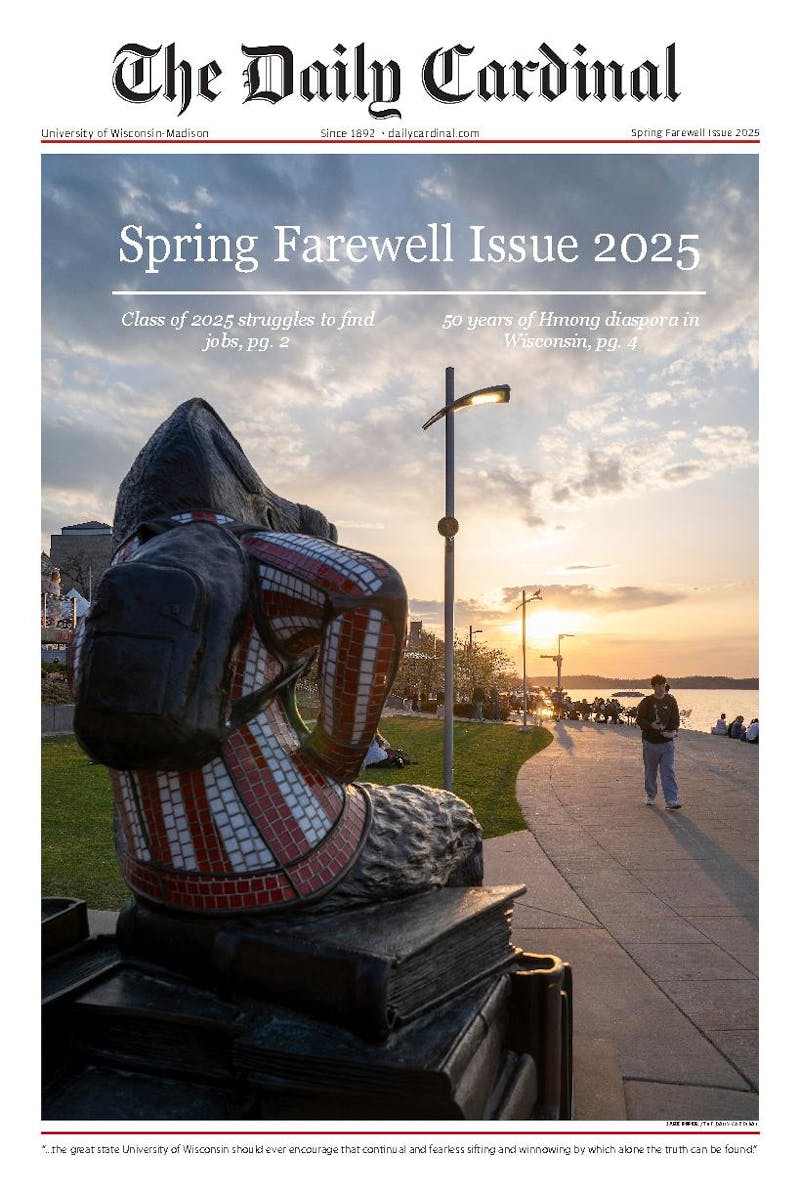Nine years ago, the University of Wisconsin-Madison began using Canvas, and it’s difficult for students to imagine a world without it.
If you went to a university in a time before the implementation of Learning Management Systems like Canvas, these softwares allow students to digitally access course materials, review grades, submit assignments and even take exams outside of class. Since 2015, around 99% of universities rely on LMS systems to facilitate their curriculum.
It’s without question that softwares like Canvas have changed higher education forever, connecting students to the classroom at any time and anywhere with internet access. But that doesn’t mean we’re better off.
Students deserve the “right to disconnect” from their learning environments, and for instructors, softwares like Canvas have made that too easy to forget.
For the most part, the right to disconnect is a new concept. This “right” is primarily used in the context of labor protections against wrongful termination, barring employers from firing employees for a failure to respond to work messages outside of contracted hours. The French were the first to expand labor protections securing “the right to disconnect” back in 2017, and since then, federal protections have been adopted in 18 countries spanning five continents.
While the U.S. is not among the list of countries with federal protections, California’s Legislature proposed a bill to protect the right to disconnect earlier this year.
Though these discussions have been focused on protecting those in the workplace, students also deserve a voice in this conversation. The reality is that the recent popularity of “the right to disconnect” reflects growing concerns about changing standards of productivity and availability in the digital age — expectations that expand beyond professional spaces.
As advancements in technologies like Canvas and other LMS softwares “have crumbled every barrier that existed in traditional classroom learning,” expectations of what students are responsible for on their own time have changed.
With Canvas, activities that were once restricted to a classroom setting, like the collection of assignments and facilitation of exams, can now take place remotely. Instructors aren’t required to use instructional time on student assessments, and with the ability to set midnight due dates, students can spend more time preparing assignments.
In concept, these sound like positive changes. But in practice, they encroach on students' ability to separate the classroom from their personal time and spaces.
If you’ve ever had an assignment — or worse, an exam — due on a Friday at 11:59 p.m., you know what I’m talking about.
As a result of pushing deadlines later into the night and weekends, students are forced to make the difficult choice of whether or not to maximize the time they spend preparing assignments. Think about it: if you have more time to study, to edit and revise, why wouldn’t you take it? Consequently, late-night deadlines pressure even high-achieving students with proper time management skills to wait until the last minute to submit. Virtually proctored exams force students to make the same choice but with even higher stakes.
The reality is Canvas isn’t the problem, but there is an issue with how it’s changed our expectations of students in higher education. With the ability for students to access course materials anywhere at any time has come a not-so-subtle expectation for students to keep an open door to the classroom everywhere, no matter the time.
Luckily, the solution here is simple. To protect students’ right to close the classroom door — the educational “right to disconnect” — instructors need to set deadlines during regular work hours. Work can still be submitted virtually, just at the start of lecture. Exams can still happen online, but only if they happen in the classroom, and students can leave them behind as they walk out the door.
Blake Martin is a senior studying English & Political Science. Do you agree that instructors use of learning management softwares -- like Canvas -- have stopped students from closing the classroom door? Send all comments to opinion@dailycardinal.com
Blake Martin is the opinions editor for The Daily Cardinal.






